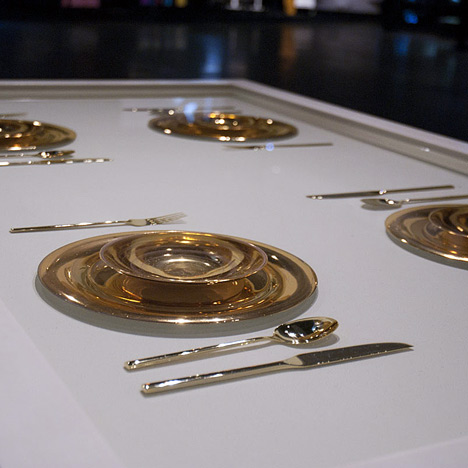
Water Table Object by Heng Zhi
Beijing Design Week 2011: golden plates and cutlery become slowly submerged underwater when this table is set.
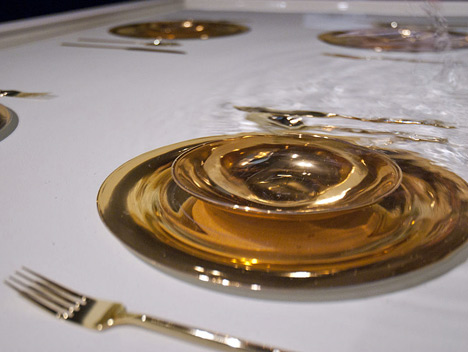
The top of the table by Chinese designer Heng Zhi sits on a tank of water that's concealed inside the Corian frame.
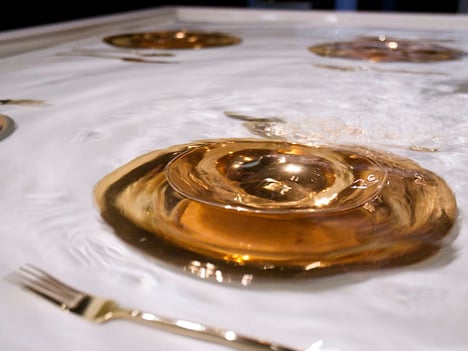
The weight of the metal plates and cutlery forces the floating tabletop to sink below the surface of the water.
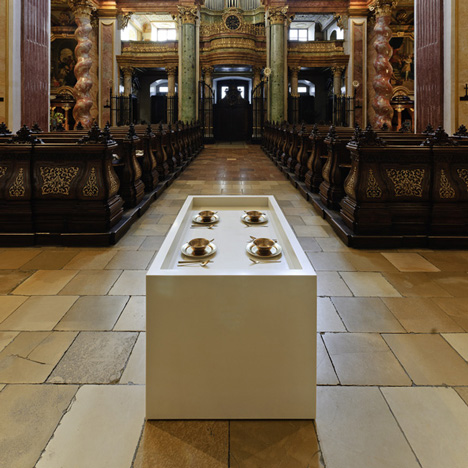
Once water has flooded the surface, diners are forced to either let their food get wet or to eat with only their hands.
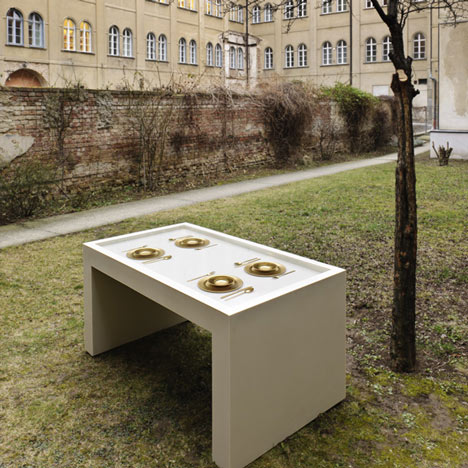
Chinese designer Heng Zhi produced Water Table Object following a research project that questions whether using knives and forks or chopsticks is more civilised than eating with one’s hands.
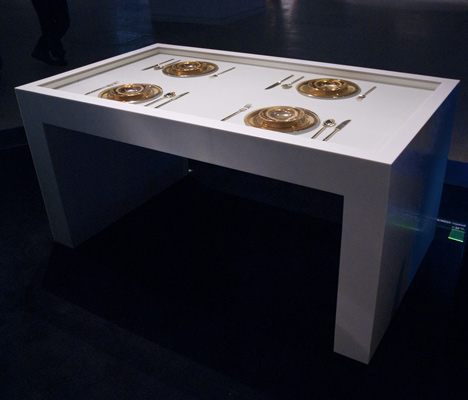
The table is on show at the National Museum of China until 17 October for the Beijing International Design Triennial, which coincides with Beijing Design Week.
See more stories from Beijing Design Week here:
Here's some more information from Zhi:
Water Table Object by Heng Zhi
1st Beijing International Design Triennial: Vienna based Chinese designer Heng Zhi contributed an object installation called “Water Table Object” to the part “What if..” curated by Fiona Raby and Anthony Dunne.
On show is the Water Table Object made of corian with four pairs of golden tableware sunken in water. A video projection shows the process how the table can (or can’t) be “used”.
Heng Zhi’s installation was firstly exhibited at the Jesuit Church Vienna before being shipped to Beijing and can be seen at Beijing International Design Triennial from 27th September to 17th October at China National Museum.
The project was created based on a one-year research on dining culture, specifically chopsticks and cutleries. By doing so, Heng Zhi explores ways to combine theory and practice in tangible objects. The theoretical output is an essay called “Stäbchen oder Besteck? – Entstehung, Formwandlung, und die ‘zivilisierten’ Esser” (Chopsticks or Cutleries? – Origins, Mutations and the Civilised Diners)
“Why do we need a fork? Why is it ‘barbarian’ and ‘uncivilized’ to eat with hands from your own plate? Because it feels embarrassing to be seen with dirty and oily finger in company.” -- Norbert Elias
Poetic interpretation of the familiar shape of a dining table brings to mind the formalities of dining that are taken for granted in the everyday life. Poetry happens during the process of serving the table, by force of the fragility of the whole setting. Watching the downfall of the eating implements that we are used to, we start to question why certain patterns of behaviour and certain everyday objects make up the relationships within social groups. Poetry takes place here by turning an everyday object useless.